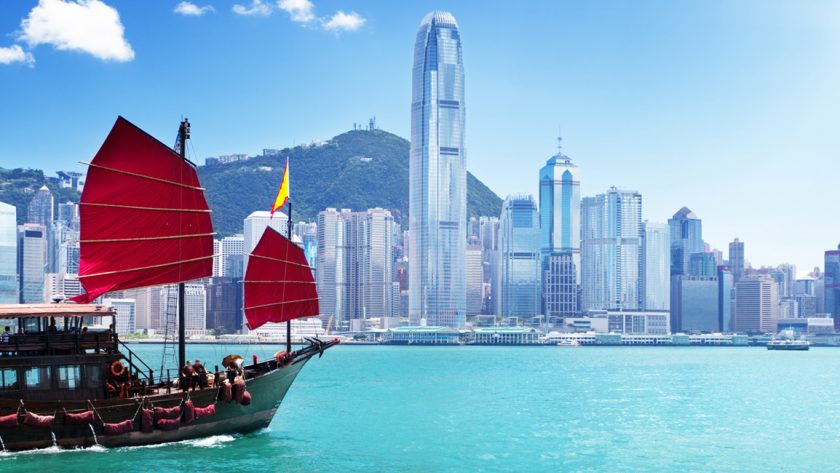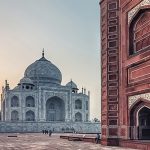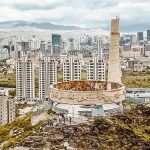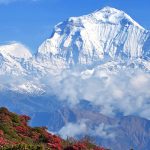The last night I spent in Hong Kong, I wandered through Temple Street Night Market with a British vagabond, buying cheap trinkets made in mainland China. We bought silk pajamas, pirated CDs, cheap translucent jade, and faux Doc Martens. The Temple Street market is in Tsim Tsa Shui, across the harbor from the glitzy Central District, and noticeably less fashionable. We picked our way through narrow aisles lit by bare light bulbs swaying from makeshift power lines, their pale yellow light illuminating a museum of junk. Or treasures, depending on your tourist dollar. The vendors seemed arranged almost chronologically with respect to their wares. Starting at one end, piles of Qing dynasty opium pipes, imperial sunglasses (wire-rimmed John Lennon jobs), and small blue and white porcelain bowls the hawker swore were Ming dynasty. As we slowly moved down the street, the years fell away as fast as prices dropped, and soon we were haggling over colonial British jewelry boxes and faded palladium photographs of polo players. The next tables had stacks of Mao Zedong pins in every shade of red. The seeming contradiction didn’t phase the seller; he knew people wanted to buy these trinkets, and who cares about idealism when money could be made. Pure Hong Kong. A smattering of Deng Xiaoping posters segued into monstrous piles of posters of Cantonese pop stars, pirated video DVDs, pornography, Tommy Hilfinger rip-offs, leather purses, remnant souvenirs of the `97 Handover, and the most ubiquitous symbol of Hong Kong today – cell phones. We haggled and bought, got ripped off and found deals. I can’t think of anything that’s more fun than the pas de deux between the vendor and I as we dance around prices and treasures.
My British friend, Roy, and I had met on the train from Guangzhou, China and were staying in the infamously decrepit Chungking Mansions together. That afternoon, we schlepped our bags up the stairs to the twelfth floor since the chronically broken elevator remained frozen on the first floor, its steel doors locked open. Rather like a trap set to spring. By the time we reached New Garden hostel, I felt as if I were breathing underwater from the sweat, the dead still air in the shafts of Chungking Mansions, and the blanket of tropical humidity. Every time I arrive in Hong Kong, whether from China or from the U.S., I’m surprised to remember how tropical the area is. I’m immediately assailed by the warm, rich smell of the city and surrounding jungle, like sweet fruit that’s overripe and decaying.
Over dinner in a noodle shop, we talked about any changes we’d seen in Hong Kong since its return to China in `97. Just passing through, we didn’t see anything different from the times each of us spent here during British rule. Our friends who lived in the city said there have been small things, hard to pinpoint, but essentially the skyscrapers still dominate the skyline and mentality of Hong Kong. Everyone wants to make money, Beijing knows that’s good, and glass and steel spring from the green jungle edges of the city at an alarming rate.
A drop in tourists from Japan and Korea since 1997 have left Hong Kong Tourist Authorities reeling; theorizing that without the colonial label and no longer the shopping bargain it once was, tourists are heading elsewhere. That would imply more deals being offered to lure travelers back. Not necessarily true across the board, but it’s almost always possible to find deals in Hong Kong. Political, financial, or cultural, Hong Kong has always been about making deals. It might mean staying in the Chungking or Mirador Mansions on Nathan Road in Tsim Tsa Shui, or eating lo mien noodles instead of shark fin soup, but you can still get by for relatively cheap. Wandering the streets doesn’t cost anything, and that’s where the best of Hong Kong is.
There are few sights, per se, in Hong Kong. Yes, there’s Victoria Peak, crowded with tourists on its cool uphill tram and sweeping views of Central district and the bay. Sure, stand at the base of I.M. Pei’s Bank of China building and try to cram it all in your camera’s viewfinder. The various markets, (bird, jade, silk) are great, but sometimes it feels as if they are more for the tourists’ benefit than any authentic trade among Hong Kong citizens. Hong Kong’s lure is really its streets, its alleys, the slums and sleek financial centers squeezed next to each other on the hillside. It’s in the stacked residences of the midlevels, and on the doorsteps of pubs in Lan Kwai Fong that Hong Kong generates the electricity of the city. Like in any great city, it’s not at the monuments or in the museums that I find any truth about the place. It’s when I’m wandering between tailor stands and antique curio shops on Hollywood Road connecting Central and Western districts, or playing ultimate frisbee with expats in a park, or haggling and laughing my way through the market in Mah Wah Lane that I begin, just barely, to know a place.
After a night dancing in Wan Chai, it’s good to wake early and learn Tai Chi in any one of dozens of parks in the city. In rows like a platoon Chinese move synchronously and slowly, almost as if they are underwater. It seems the antithesis of the ultra-beautiful people gyrating in the packed quarters of the club the night before. But that is what Hong Kong is all about, not contradiction, but an all-encompassing embrace. The city has everything. It’s a mad rush of financial excess where millions place offerings (both thanks for thier riches and requests for more) at Wong Tai Sin’s Taoist temple in New Kowloon. Though the British are gone, colonialism will always be a part of Hong Kong. At the same time, traditional Chinese culture is stronger than it has been for over a century. When the mosaic of Hong Kong gets too much for me, when I can’t seem to figure the city out, I head to the Star Ferry Pier. The ferry began crisscrossing the bay between Kowloon’s peninsula and Central’s heart in 1898. Everything about the ferry line is wonderfully old school: sailor uniforms, boat names like Meridian Star and Twinkling Star, life preservers in green and white and coiled ropes being tossed to the pier as we pull in. Crossing from Kowloon, in the short seven minutes it takes to cut through the choppy waters, I gain a sense of perspective on Hong Kong. Central’s knife-like skyline cutting into the green of Victoria peak, and stretching as far as the eye can see along the bay in dense high rises, steamer ships and sampans plying the waters, the New Territories stretching to mainland China behind me. For only HK$ 2, I face a stiff breeze, a salty splash of water, and a moment of quiet insight into the complexity of Hong Kong.



